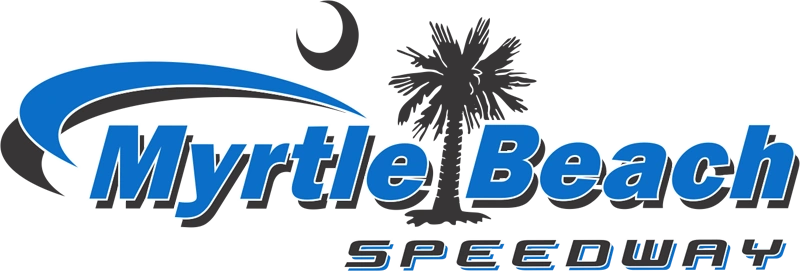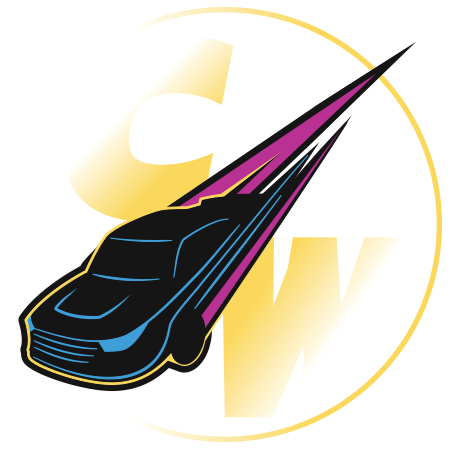Every track, past, present, and future, has a story to tell–a storied history with some legendary moments and legendary winners. Since its inception in 1949, 179 unique speedways and tracks have been featured on the NASCAR circuit across its many distinctive series. Today, only 53 of those still remain on the schedule across all of NASCAR’s divisions, while the others often waste away. Some get sold to real estate developers. They get turned into condos or a Walmart or a parking lot or a shopping mall. Others get left to ruin, a painful reminder of their former glory. And some get torn down in order to build a new short track, but never reach beyond the blueprint and/or good idea phase of planning.
For our second entry in our Forgotten Speedways series, we’re going to take a look at a track that was a cornerstone in the career of one of NASCAR’s most popular drivers, Dale Earnhardt Jr. That track is none other than the famed Myrtle Beach Speedway. Junebug cut his teeth at the facility in the late model ranks in the mid-1990s. It wasn’t uncommon to see Junior’s number 3 Sun Drop or Mom ‘N Pops Chevy sporting around the D-shaped oval. It was also the track in which Dale Jr. made his Xfinity Series (then-Busch Series) debut. So, with no further ado, here is Forgotten Speedways: Myrtle Beach Speedway.

Also Read:
The track that eventually became known as Myrtle Beach Speedway opened in 1958 in Conway, South Carolina as Rambi Raceway. In this embryonic form, the track was a dirt oval that hosted a couple of NASCAR races. During its first year, the track hosted NASCAR’s now-defunct Convertible division. Also racing at the track was the NASCAR Cup Series, which ran races there from 1958 to 1965. In 1968, a man named Nick Lucas purchased the facility and the track underwent a transformation. Keeping essentially the same layout, he paved the track. The name was changed to Myrtle Beach Speedway as Myrtle Beach, only about a 30 minute drive away, was becoming a booming tourist attraction. This was the design that the track kept until it ultimately closed. In 1987, businessman Bill Hardee bought a co-ownership stake in the track.
The following year, the NASCAR Busch Series (currently Xfinity Series) became a mainstay series at the track. Typically, events were held in the summer, either in late June or early July, typically when the Cup Series were in Daytona preparing for the annual Firecracker 400. From 1988 to 1990, the race was a 200-lapper. However, starting in 1991, the distance was increased to 250 laps. The official name of the race was the Myrtle Beach 250. It was a mainstay on the NASCAR Busch Series Schedule before being taken off the circuit for the 2001 season.
In 2012, then-South Carolina Lieutenant Governor Andre Bauer held a meeting with Robert J. Lutz. Bauer wanted Lutz to purchase the track and host marquee events. The hope was that it would boost the local Conway and Myrtle Beach economies. Lutz subsequently formed Speedway Group Inc. and purchased the track outright along with 48 acres of surrounding land. The new ownership group upgraded the amenities with the goal of scoring another high-level racing event. The CARS Tour started to race at the track, and the speedway expanded its season into February, hosting the now-famous IceBreaker late model stock race.
In May of 2020, it was announced that the track would close following its last scheduled race in August. Subsequently, the track was sold to land developers and its doors were shuttered.
Myrtle Beach Speedway was a traditional D-shaped oval. It had an asphalt racing surface that was grainy and rough due to the sandy soil of the beach. Infamously, the track ate up tires and proved to be a difficult track for many young drivers of the lower divisions. It was measured in at 0.538 of a mile. The degrees in the banking measured in at 13 degrees while the dogleg on the frontstretch was 4 degrees in banking.
Several racing series throughout the southeast turned laps at this historic track. Most notable was the NASCAR Busch Series, which held races there from 1988 to 2000 before their schedule was changed to better align with the NASCAR Winston Cup Series. Speaking of the Cup Series, they held races at the track from 1958 to 1965.
After the Busch Series left the track, other series remained, including both NASCAR-sanctioned and unsanctioned. The Wheelen Modified Tour competed at the track from 2017-2019. Before that, the Wheelen Southern Modified Tour held races at the track off and on between 1989 and 2009.
More famously, the track hosted the crown jewel late model events, the IceBreaker in February to kick off the racing season, and the South Carolina 400 in September to close the season.
A number of big names have gone to victory lane at Myrtle Beach Speedway. Dale Earnhardt Jr. scored his first of three late model victories at the track in 1994. Notable winners of the NASCAR Xfinity Series at the track include the likes of Jimmy Spencer (2), Mark Martin, Jeff Burton, Larry Pearson, David Green, Elliott Sadler, and Randy LaJoie. The final two races at the track in 1999 and 2000 were both won by Jeff Green.
Unfortunately, the track no longer exists. In 2021, the original concept was to demolish the facility and build condominiums and hotels. That plan ultimately fell through and the track remained dormant. Weeds and overgrowth took over much of the racing facility. Demolition of the track commenced in December of 2021. The pavement of the track was ripped up as were the concession stands and concrete walls. As of the summer of 2023, all that remained was the original dirt surface outline and the banking in the corners, along with rubble of the busted-up asphalt and brush piles of gnarled steel.
As of today, a pond was built along with some townhouses around the turns 1 and 2 area. Turns 3 and 4 currently remain untouched but that likely won’t be the case for long. The IceBreaker and the South Carolina 400 were both moved to the nearby Florence Motor Speedway, where they are still held to this day and are crown jewel events of the CARS Tour schedule.
Despite this track no longer existing, fans can relive the glory days by racing at the track via iRacing. Have you ever been to a race at this famous track-that-was? Personally, I haven’t. I did visit the site in the summer of 2023 to see the ghost of what once was. I even have a piece of the original asphalt racing surface in my office. Otherwise, I have been to the South Carolina 400 since it moved to Florence. If you’ve ever visited Myrtle Beach Speedway, when was it and how did you like it? Do you miss this track? Let us know!
On that note, that does it for this entry of Forgotten Speedways. Stay tuned for our next entry, where we’ll discuss Nazareth Speedway.
